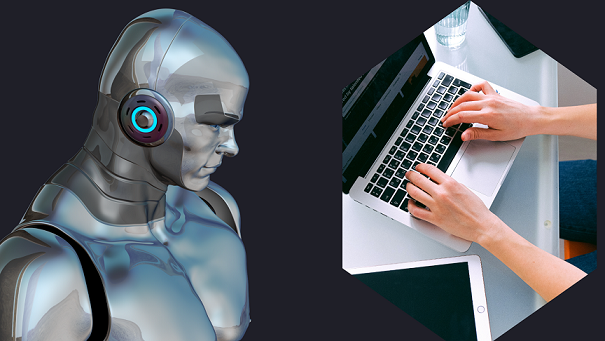The Evolution of Wearable Robotics

Wearable robotics, often referred to as exoskeletons or exosuits, have a rich history that dates back several decades. The concept emerged in the 1960s and 1970s, with early developments focusing on enhancing human strength and capability in various labor-intensive tasks. Initial prototypes, such as the Hardiman exoskeleton developed by General Electric, were designed primarily for industrial applications, allowing users to lift heavy loads with relative ease. However, these early devices were bulky, costly, and limited in practicality, which hindered widespread adoption.
As technology progressed, significant milestones began to emerge in the evolution of wearable robotics. The 1990s marked a turning point, with advancements in materials science, microelectronics, and control systems leading to the development of lighter and more agile devices. In particular, the DARPA (Defense Advanced Research Projects Agency) program initiated numerous projects that propelled research into powered exoskeletons for military use, illustrating a growing interest in augmenting human abilities through robotics.
In the 2000s, wearable robotics began to gain traction in healthcare. As the aging population grew and rehabilitation needs expanded, researchers directed their efforts toward creating exoskeletons to assist individuals with mobility impairments. Innovations such as the Ekso Bionics suit emerged, enabling patients to regain movement and independence during rehabilitation processes. Concurrently, the integration of sensors and artificial intelligence technology has vastly improved how these systems adapt to user movements, making them more effective and user-friendly.
Today, the landscape of wearable robotics continues to evolve rapidly, driven by societal needs and advances in technology. Key advancements aimed at enhancing performance in both industrial and healthcare contexts highlight the potential of wearable robotics to transform human abilities significantly. This evolution marks a promising future for these devices as we seek smarter, more efficient ways to enhance human performance.
Impact of Wearable Robotics in Human Performance
Enhancing Mobility for Individuals with Disabilities
Wearable robotics have emerged as transformative technologies aimed at improving mobility for individuals with disabilities. These devices, which can include exoskeletons, robotic legs, and powered limb supports, function to assist users in overcoming physical limitations caused by various conditions, such as spinal cord injuries, multiple sclerosis, or neurological disorders. By providing mechanical assistance, wearable robotics can significantly enhance the independence and quality of life for individuals facing mobility challenges.
Several successful implementations demonstrate the potential of wearable robotics. For instance, the ReWalk exoskeleton allows individuals with spinal cord injuries to stand, walk, and engage more fully in social activities. Users have reported not only improved physical capabilities but also enhanced psychological well-being—gaining a sense of empowerment and normality through regained mobility. Similarly, the Ekso GT, another robotic suit, has been utilized in rehabilitation settings, enabling patients to strengthen their muscles by walking in a controlled manner, thus promoting recovery and functional improvements.
In addition to physical enhancements, wearable robots also promote cognitive and emotional benefits. Participants frequently report increased confidence and motivation, underscoring the holistic advantages of incorporating such technology into their lives. As the field of wearable robotics continues to advance, the potential to change lives and foster independence remains significant, paving the way for future innovations in mobility assistance for individuals with disabilities.
Boosting Worker Efficiency in Industrial Settings
The integration of wearable robotics in industrial environments has emerged as a transformative approach to enhancing worker efficiency and safety. These devices, designed to assist with manual tasks, provide a significant advantage in labor-intensive settings where physical strain is a common concern. By enabling workers to perform tasks with greater ease and less fatigue, wearable robotics directly contribute to improved productivity and job satisfaction.
Numerous real-life case studies illustrate the effectiveness of these advanced technologies. For instance, in automotive manufacturing, the implementation of exoskeletons has allowed assembly line workers to lift heavy components with reduced risk of injury. Workers reported a marked decrease in physical discomfort and an ability to complete tasks more quickly when assisted by wearable robotics. As a result, companies observed a reduction in lost workdays associated with musculoskeletal disorders, thereby saving both time and resources.
The benefits of integrating wearable robotics extend beyond mere efficiency. These devices are engineered to improve workplace safety by providing support that minimizes the risk of injury. For example, in warehousing, where repetitive motion tasks often lead to strain and fatigue, robotic wearables help distribute lifting loads more evenly across the body. This redistribution lessens the likelihood of acute injuries and chronic pain, creating a healthier work environment.
Key Advancements in Wearable Robotics Technology
The field of wearable robotics is experiencing significant advancements, driven by cutting-edge technologies that enhance human performance across various domains. One of the most notable areas of progress is in materials science, where innovations such as lightweight composites and flexible materials are transforming the design and functionality of wearable devices. These advanced materials not only reduce the overall weight of the robotics but also improve comfort and mobility, making them more user-friendly for individuals requiring assistance.
Artificial intelligence (AI) is another critical element in the evolution of wearable robotics. AI algorithms enable devices to respond dynamically to a user’s movements and environment, providing tailored support that enhances user capability and autonomy. Machine learning techniques are used to analyze data collected from users, allowing the system to adapt and optimize its responses over time. This personalization of robotic assistance is essential in applications ranging from rehabilitation to exoskeleton use in industrial settings.
Sensor technology plays a pivotal role in the development of wearable robotics as well. Advanced sensors allow for real-time monitoring of physical activity, muscle activity, and even biomechanical parameters, facilitating immediate feedback and enhancing the interaction between human users and robotic systems. This integration of sensor technology with robotics leads to more effective performance and safer operations, particularly in environments that require precision and reliability.
Moreover, emerging trends such as soft robotics and collaborative robotics are opening new avenues for innovation. Soft robotics designs prioritize safety and adaptability, paving the way for use in sensitive environments like healthcare, where gentleness is crucial. Collaborative robotics focuses on seamless human-robot interaction, creating devices that can work alongside humans without disruption. Such advancements illustrate the vibrant future of wearable robotics technology, which continues to evolve, presenting new opportunities for enhancing human performance across various fields.
Practical Applications in Healthcare and Beyond
Wearable robotics have emerged as transformative tools in various sectors, particularly in healthcare. One of the prominent applications of this technology is in rehabilitation. Wearable exoskeletons are being utilized to assist individuals recovering from neurological injuries, such as strokes or spinal cord injuries. These devices help in restoring movement by providing support and facilitating repetitive motion exercises that are vital for physical recovery. By enabling patients to engage in rehabilitative practices with enhanced ease, wearable robotics significantly contribute to better recovery outcomes and increased motivation during therapy sessions.
Another critical application of wearable robotics lies in surgical settings. Surgeons are increasingly employing robotic wearables to augment their capabilities during complex procedures. These advancements offer precision and dexterity, allowing for minimally invasive surgeries that decrease recovery time and reduce the risk of complications. In addition to improving surgical accuracy, wearable robotics can also assist surgical teams by providing real-time data, which enhances decision-making processes during operations.
Moreover, in the realm of general healthcare monitoring, wearable robotics play an essential role in continuous patient assessment. Devices equipped with sensors can assess vital signs, track mobility patterns, and even detect falls, thereby fostering a safer environment for elderly and disabled patients.
Beyond healthcare, the applications of wearable robotics extend into sports and physical training. Athletes are increasingly leveraging these technologies to enhance performance, prevent injuries, and optimize their training regimens. The integration of wearable robotics in sports training helps in analyzing biomechanics and fine-tuning physical interventions, ultimately contributing to improved athletic performance. In conclusion, the multifaceted applications of wearable robotics are revolutionizing not only healthcare but also sports and fitness, illustrating their potential to enhance human performance comprehensively.
Challenges in Wearable Robotics Development
The field of wearable robotics has seen significant advancements in recent years, yet several challenges remain that hinder its broader application and development. One of the primary issues is the ethical considerations surrounding the use of such technology. As wearable robotics often blend the lines between human capabilities and machine assistance, it raises questions regarding autonomy, privacy, and the potential for misuse. Developers must ensure that these devices do not compromise user independence or introduce new ethical dilemmas.
Another significant hurdle is the high costs associated with the production of wearable robotics. The materials, technology, and skilled labor required to create advanced wearable systems result in steep prices that limit accessibility. This financial barrier can hinder widespread adoption, particularly in lower-income populations who could benefit greatly from robotic assistance in their daily lives. Developers need to explore cost-effective solutions without sacrificing quality or efficacy to appeal to a broader market.
User comfort is also a critical consideration. Wearable robotics often involve complex designs that may be cumbersome or intimidating to users, which can reduce their willingness to adopt such technologies. Ensuring optimal ergonomics and ease of use must be prioritized during the design process. Developers face the challenge of creating devices that not only perform well but also fit seamlessly into the users’ lifestyle without causing discomfort or disrupting daily routines.
Additionally, regulatory and societal implications present challenges for developers in wearable robotics. As these technologies become more integrated into society, ensuring compliance with laws and regulations becomes paramount. The potential for widespread adoption of wearable robotics necessitates thorough examination of safety standards, privacy concerns, and the impact on employment within various sectors. Addressing these challenges is essential for the advancement of wearable robotics in a socially responsible manner.
The Future of Wearable Robotic Technology
As researchers continue to explore innovative engineering solutions, the potential for wearable robotics to enhance human performance across various domains is steadily increasing. Key areas expected to witness transformation include healthcare, rehabilitation, and industrial sectors, where these devices can provide vital support to users and significantly improve efficiency and safety.
One promising direction involves the enhancement of mobility aids and exoskeletons designed for individuals with mobility impairments. In the future, wearable robotic devices will be designed to be more lightweight, user-friendly, and adaptable to individual needs. These advancements could empower users to regain independence and enhance their overall quality of life. Furthermore, the integration of advanced sensors and adaptive algorithms will facilitate real-time feedback, allowing these devices to better respond to the user’s movements and intentions.
In addition to personal health applications, wearable robotics are likely to penetrate various industrial sectors. The demand for automated solutions to assist workers in high-risk environments has spurred interest in the development of exoskeletons that reduce strain and fatigue. This could decrease the likelihood of workplace injuries while simultaneously increasing productivity.


